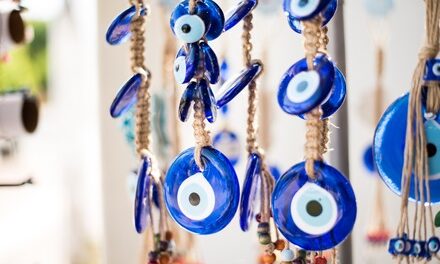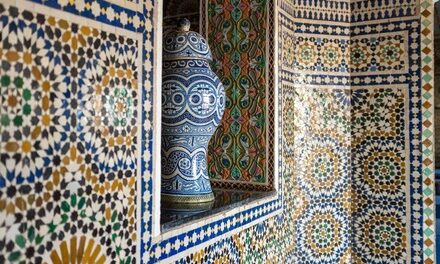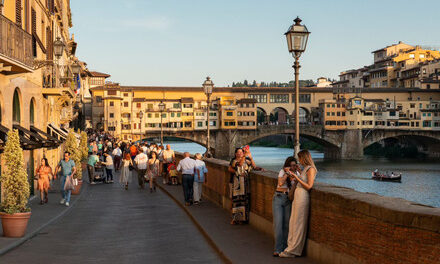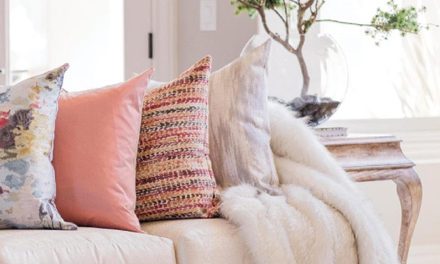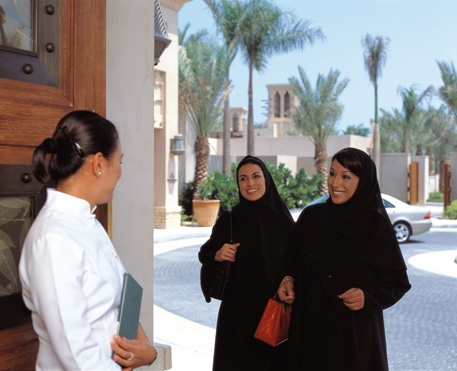“When people think about Muslim women, they think of the image of Saudi Arabia or Afghanistan,” says Ahmed. Why is that, when 90 percent of the Muslim world does not wear any of this stuff? And why is it that I am always asked to explain why Islam oppresses women and yet never asked why Islam has produced seven women prime ministers or heads of state and Europe only two or three?”
Why I Cover
Krista Tippet of American Public Media sits down with a remarkable woman to hear more on a most intriguing subject.
Krista Tippet: You were born in Egypt in the waning days of the British Empire. The notion of the Arab world had not yet been invented. But in our time, we refer to the Arab world as a fact of history and geography. We take it for granted and interchange it with another newly invented term, the Islamic world.
Laila Ahmed: Yes. For one thing, I no longer believe that there’s an Islamic world; where exactly are the borders? Are they in Chicago? Where are they? Where does the Islamic world end, and where does the West begin? Is it in Paris, or where is it? So I do think what happens in this country is going to be as much about the Islamic world as whatever happens over there. The Islamic world is no longer over there.
KT: When it comes to analyzing Muslim women, you say Westerners need to question their most basic assumptions. We tend to focus on Muslim clothing and headdress as a symbol of root problems. Like when Prime Minister Tony Blair recently called the Islamic full-face veil a “mark of separation,” he echoed a nineteenth-century British missionary who described Muslim women as “buried alive behind the veil.”
LA: What we’re living through right now is so startling to me in some ways, partly because it seems to repeat history in a very disturbing way. And what I mean is, it was extraordinary for me to turn on the television during the Afghan war and see women throwing off the veil, or see endless programs on CNN on the veil, see Laura Bush speaking about women in Afghanistan and liberating them. And what was disturbing there was to see the replay of what the British Empire did in Egypt 100 years ago. And it was almost hard to believe.
KT: Tell us about it.
LA: What I need to invoke here is the belief at the end of the nineteenth century that the veil symbolized the oppression of Muslim women. It’s part of the mythology of that era in which whatever was being done in another country, the countries that they dominated, whether it was India or sub-Saharan Africa or the Muslim countries, however the women dressed there it was wrong. In sub-Saharan Africa, they didn’t wear enough clothes; they didn’t dress the way European Victorian women dressed. In the Middle East, they wore too many clothes. So in the West, the veil became the emblem of how uncivilized Islam was and, on the other hand, how civilized Europeans were. But the other twist that we need to remember is that Victorian dress was hardly the most liberated.
KT: That’s right. And you point out that, even as Victorian women had thoughts of liberation and emancipation or just progress, no one suggested that they had to discard Victorian dress for that of some other culture.
LA: That’s right. And the wonderful example there, too, is that Lord Cromer, who was the governor of Egypt at the end of the nineteenth and early twentieth centuries, was the most vociferous advocate of how important it was that Muslim women unveil. And, by the way, you can see a parallel. He was the Paul Bremer of his day.
KT: The Paul Bremer in charge of our presence in Iraq?
LA: Yes, and his equivalent 100 years ago, was Lord Cromer in Egypt. He was telling people how Egyptian society ought to be, and the first thing to be done was for women to throw off the veil. Until then, the men would not become civilized. He didn’t care about the women. Women should throw off the veil so they could raise civilized young boys who became civilized men. The women would be like good British mothers.
Now this same Lord Cromer, who was making such a big fuss about liberating Muslim women, was the president and founder of the Society Opposed to Women’s Suffrage in England. He didn’t think women ought to have the vote. He thought Victorian society was perfect as it was, with its patriarchal rule over everything, and that it ought to be spread across the world. Therefore, Muslim women had to unveil.
KT: Before the nineteenth century, the veil had quite different connotations, didn’t it, than today? Wasn’t it something that upper-class women wore?
LA: That’s right. Now, I think we also need to distinguish what we mean by “veil” because the head covering for women was the norm throughout the Muslim world, and, actually, head covering for men, too, was the norm. All this was called the veil. The word really means a head covering, usually not a facial veil. The face veil, in addition to the head covering, was worn by upper-class women. Men and women all wore a head veil. I mean, that was just normal dress.
KT: You can tell I didn’t know that the veil during Muhammad’s lifetime, was used heavily in the Christian Middle East and Mediterranean.
LA: That’s right. That’s right.
KT: So this was actually something originally that Islam took from the Christian culture around it.
LA: From Christian culture and from whatever other cultures were there. I mean the veil was the norm in Iran, which wasn’t Christian. It was Zoroastrian. It was also a norm in the Christian Middle East. So it seems to have been a form of normal dress for particularly the upper classes of the region throughout, regardless of what religion they were. Jewish women too, Christian women, Zoroastrian women. That was just the norm of dress. But it wasn’t necessarily about making women’s lives better.
You know, whenever the veil is prominently discussed in Western society, its implication is that we are the superior civilization. That is all summed up in the symbolism of the veil. It’s not about women at all, I think.
KT: You live in the United States now, you write about women’s issues, you know many American feminists. I wonder how you, as someone who grew up in that culture, not wearing the veil, think differently about certain images than some of your American-born colleagues.
LA: That’s an interesting question because I, too, actually react against the veil. I grew up in a society where women did not veil. When Americans see a woman in a veil they might think, well, this is just a Muslim custom. But that never occurs to me. I know it’s not a Muslim custom, having lived it. I know that many millions of Muslim women do not and have not worn it for 40, 50 or 60 years.
As a young person, I saw that people who wore it were affiliated with Muslim fundamentalist groups, or with groups whose origins were in Saudi Arabia and who seemed like fundamentalists from where I stood. But nowadays, if you talk to young American women who wear hijab or veil or a headscarf of some kind, they’re not fundamentalists. Some of them are passionate feminists. So its meaning is changing in America today.
KT: But isn’t it also changing in some other countries? Aren’t generations of young university-educated women making that a choice?
LA: There have been endless books analyzing why on earth is this happening. Class was one issue; it was easier for people moving particularly from villages to the city to assume a very modest style of dress to show that they were not departing from their traditions. All sorts of reasons are being advanced for it. There’s no single source for why this is happening.
KT: But you do have ideas about what young women are feeling about the veil when they choose it, and that it can be a form of public power and freedom. Whereas, I think many Western women assume that the veil is a kind of retreat from reality or a symbol of submission in a way that would have negative connotations in our culture.
LA: Yes, but I don’t think it is about submission at all. Certainly not among the young.
KT: What is it about, then, if not submission?
LA: It depends what country we’re talking about because its meaning clearly changes by country. If you are a minority and you wear the veil, you’re making a statement about being willing to take a stand for your beliefs against the current of the majority. And that’s a very courageous thing to do. If I were living in Saudi Arabia, where it is mandatory, and I put on a headscarf, it would mean something completely different if I were in Egypt, where there’s probably a lot of social pressure even among the majority, to wear it. So I think we need to analyze this question in relation to where the person is living at the time. Now, one of the things I think I should not leave out is that some people are wearing it because they believe God wants them to. But I don’t know how one gauges that exactly.
KT: You have a chapter in your memoir which you call “Harem.” You know, that’s another word that kind of comes down to us through literature and fairy tales, and it’s kind of an image of what we think might have always been wrong with women in, you know, Middle Eastern Arabic societies.
LA: Yes, you’re right.
KT: Your “Harem” chapter then is really about the closeness of women in the circles in which you grew up. I’d love to know more about what a harem is really like.
LA: As I describe it in my memoir, it actually is a very warm and wonderful environment because it was about being with all the women of the family and the children very comfortably. There was usually, you know, at least half a dozen aunts and Grandmother and so on. Let me tell you how people have responded to me on this subject. They have said, “That’s what it was like when I was a kid in Vermont” or in Minnesota, or wherever it was. “Because we did gather; it was the women who gathered. We’d gather in the kitchen.” And they would describe that atmosphere of free discussion like ours in a women’s community in Cairo, where I grew up, or Alexandria. This was actually a common experience of many societies before we became nuclear families, each in our little box. A lot of people have these memories of extended families and of people, you know, dividing up by sex to talk about whatever their interests were.
KT: What does the word harem really mean?
LA: It means women’s quarters.
KT: So it doesn’t necessarily mean the concubines’ room.
LA: No, it certainly doesn’t. That was a Western male fantasy. Men invented what harems meant. All the Western men who traveled to the Muslim world who were unable to get into a harem, had fantasies as to what was going on in there. So this is where our American idea of the word comes from.
KT: Correct me if I’m wrong, but you say every Muslim country is different, every culture is different, but in Muslim cultures there is a greater separation between men and women now than there is here.
LA: Yes, that’s probably true.
KT: That’s something that American feminists will consider a problem. Is that a problem in your mind?
LA: No, it isn’t. American feminists would probably say it’s a problem. On the other hand, what was striking to me when I first came to this country, was that people kept telling me about their wonderful consciousness-raising groups, and I said, “Well, what are they?” And they said, “You know, women get together and talk about their experiences.” So apparently it was a very powerful thing in the American feminist movement for women to get together without men and talk.
KT: As you watch the American presence in Iraq, what would you like Americans to be thinking about and watching for in terms of women?
LA: If we focus on women, what’s happening there seems to be heading towards disaster. You know, the Iraqi women have been among those in the lead of liberated Muslim women. And I guess one of the difficulties here is that I don’t think of the Middle East as Muslim. It’s been for thousands of years, a mixture of religions. It’s not the case now.
What I call ethical Islam is actually an ethical mixed heritage. It’s about how people of different religions have lived together for millennia, and that is what I cherish. And it has been destroyed, I hope not irretrievably. I don’t quite know how we’re going to come back, but I think it’s latently present. It’s living in the people, but I do think that the average Iraqi woman is concerned more at the moment with what they all want most-safety, peace, clean water, electricity.




